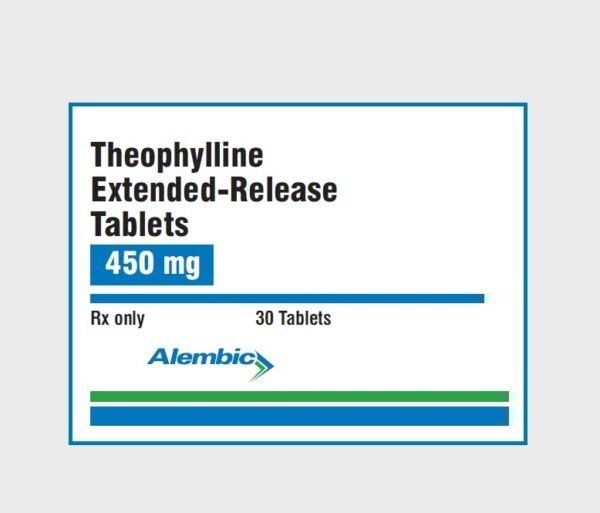
Contents
- 1 theophylline (Elixophyllin, Theo-24)
- 1.1 Acute Bronchitis
- 1.2 Emphysema
- 1.3 Sleep Apnea
- 1.4 COPD (Chronic Obstructive Pulmonary Disease)
- 1.5 Neutropenia
- 1.6 Chronic Bronchitis
- 1.7 Asthma
- 1.8 COPD vs. Emphysema
- 1.9 Asthma Medications
- 1.10 What Is Asthma? 19 Complex Facts
- 1.11 Emphysema, Chronic Bronchitis, and Colds
theophylline (Elixophyllin, Theo-24)
Theophylline belongs to a class of medications called bronchodilators, used in treating asthma and other airway diseases. Asthma is a breathing problem caused by narrowing of the airways, the breathing passages that allow air to move in and out of the lungs. Airways can be narrowed due to accumulation of mucus, spasm of the muscles surrounding these airways, or swelling of the lining. Airway narrowing leads to symptoms of shortness of breath, wheezing, cough, and congestion. Theophylline opens airways by relaxing the smooth muscles in the walls. Theophylline also helps in patients with emphysema and chronic bronchitis when their symptoms are partially related to reversible airway narrowing. Theophylline also strengthens right heart function and diaphragm movement. Theophylline was approved by the FDA in April 1979.
What brand names are available?
Is theophylline available as a generic drug?
Do I need a prescription?
What are the uses?
Theophylline is used for the relief and prevention of airway narrowing (bronchospasm) in patients with asthma. Theophylline can also be used in treating patients with emphysema and chronic bronchitis when their symptoms are related to reversible airway narrowing. Theophylline can be administered with other bronchodilators, such as albuterol (Ventolin, Proventil), for added bronchodilator effect.
What are the side effects?
Common side effects include:
Other important and more serious side effects include seizures and heart arrhythmias. Theophylline should be used cautiously in patients with high blood pressure, peptic ulcer disease, seizure disorders, and serious heart disease, especially heart rhythm problems.
QUESTION
What is the dosage?
Theophylline may be taken with or without food but should not be crushed or chewed. High blood theophylline levels can lead to symptoms of toxicity (see below). Therefore, theophylline blood levels are periodically monitored during treatment to assure achievement of optimal and safe levels. The initial dose is 300-600 mg once daily or as a divided dose for 3 days. The maintenance dose is 400-600 mg daily.
Which drugs or supplements interact?
Certain groups of patients breakdown theophylline slowly, and can develop elevated blood levels and potential toxicity even on normal doses. These patients include those with liver disease, older men with chronic lung diseases, infants, patients with high fever or heart failure, and patients taking other medications that increase blood theophylline levels.
Theophylline toxicity can cause nausea, vomiting, insomnia, seizures, agitation and life-threatening heart rhythm abnormalities. St. John’s Wort, rifampin, and carbamazepine decrease levels of theophylline and potentially its effect by increasing its elimination. Theophylline may decrease levels and the effect of carbamazepine by increasing its elimination. Theophylline is metabolized mainly by the liver and dosages should be reduced in patients with liver dysfunction. On the other hand, theophylline is generally metabolized more rapidly in smokers (both tobacco and marijuana) and higher dosages may be required.
Is theophylline safe to take if I’m pregnant or breastfeeding?
There are no adequate studies in pregnant women.
Theophylline is excreted in breast milk and may cause mild side effects such as irritability in the infant.
What else should I know?
What preparations are available?
Capsule (extended release): 100, 200, 300, and 400 mg
How should I keep stored?
Theophylline should be stored at room temperature, below 77 C F (25 C) in a tightly closed container.
Summary
Theophylline (Elixophyllin, Theo-24) is a bronchodilator prescribed for the treatment of asthma and other airway conditions. Side effects, drug interactions, dosage, and pregnancy safety information should be reviewed prior to taking this medication.
Related Disease Conditions
Acute Bronchitis
Bronchitis is inflammation of the airways in the lung. Acute bronchitis is short in duration (10-20 days) compared to chronic bronchitis, which lasts for months to years. Causes of acute bronchitis include viruses and bacteria, meaning it can be contagious. Acute bronchitis caused by environmental factors such as pollution or cigarette smoke is not contagious. Common symptoms for acute bronchitis include nasal congestion, cough, headache, sore throat, muscle aches, and fatigue. Acute bronchitis in children may also include runny nose, fever, and chest pain. Treatment for acute bronchitis includes OTC pain relievers, cough suppressants (although not recommended in children), and rest. Infrequently antibiotics may be prescribed.
Emphysema
Emphysema is a COPD (chronic obstructive pulmonary disease) that often occurs with other obstructive pulmonary problems and chronic bronchitis. Causes of emphysema include chronic cigarette smoking, exposure to secondhand smoke, air pollution, and in the underdeveloped parts of the world. Symptoms of emphysema include chronic cough, chest discomfort, breathlessness, and wheezing. Treatments include medication and lifestyle changes.
Sleep Apnea
Sleep apnea is defined as a reduction or cessation of breathing during sleep. The three types of sleep apnea are central apnea, obstructive apnea (OSA), and a mixture of central and obstructive apnea. Central sleep apnea is caused by a failure of the brain to activate the muscles of breathing during sleep. OSA is caused by the collapse of the airway during sleep. OSA is diagnosed and evaluated through patient history, physical examination, and polysomnography. There are many complications related to obstructive sleep apnea. Treatments are surgical and non-surgical.
COPD (Chronic Obstructive Pulmonary Disease)
COPD or chronic obstructive pulmonary disease is a lung condition caused by smoking tobacco, exposure to secondhand smoke, and/or air pollutants. Conditions that accompany COPD include chronic bronchitis, chronic cough, and emphysema. Symptoms of COPD include shortness of breath, wheezing, and chronic cough. Treatment of COPD includes GOLD guidelines, smoking cessation, medications, and surgery. The life expectancy of a person with COPD depends on the stage of the disease.
Neutropenia
Neutropenia is a marked decrease in the number of neutrophils, neutrophils being a type of white blood cell (specifically a form of granulocyte) filled with neutrally-staining granules, tiny sacs of enzymes that help the cell to kill and digest microorganisms it has engulfed by phagocytosis. Signs and symptoms of neutropenia include gum pain and swelling, skin abscesses, recurrent ear and sinus infections, sore mouth, low-grade fever, pneumonia-like symptoms, and pain and irritation around the rectal area. Neutropenia has numerous causes, for example, infections (HIV, TB, mono); medications (chemotherapy); vitamin deficiencies (anemia); bone marrow diseases (leukemias), radiation therapy, autoimmune destruction of neutrophils, and hypersplenism. Treatment of neutropenia depends upon the cause and the health of the patient.
Chronic Bronchitis
Chronic bronchitis is a cough that occurs daily with production of sputum that lasts for at least 3 months, 2 years in a row. Causes of chronic bronchitis include cigarette smoking, inhaled irritants, and underlying disease processes (such as asthma, or congestive heart failure). Symptoms include cough, shortness of breath, and wheezing. Treatments include bronchodilators and steroids. Complications of chronic bronchitis include COPD and emphysema.
Asthma
Asthma is a condition in which hyperreactive airways constrict and result in symptoms like wheezing, coughing, and shortness of breath. Causes of asthma include genetics, environmental factors, personal history of allergies, and other factors. Asthma is diagnosed by a physician based on a patient’s family history and results from lung function tests and other exams. Inhaled corticosteroids (ICS) and long-acting bronchodilators (LABAs) are used in the treatment of asthma. Generally, the prognosis for a patient with asthma is good. Exposure to allergens found on farms may protect against asthma symptoms.
COPD vs. Emphysema
COPD (chronic obstructive pulmonary disease) is the term doctors and other healthcare professionals use to describe a group of serious, progressive (worsens over time), chronic lung diseases that include emphysema, chronic bronchitis, and sometimes asthma. The number one cause of COPD or emphysema is smoking, and smoking is the third leading cause of death in the US.
Asthma Medications
There are two types of asthma medications: long-term control with anti-inflammatory drugs and quick relief from bronchodilators. Asthma medicines may be inhaled using a metered-dose inhaler or nebulizer or they may be taken orally. People with high blood pressure, diabetes, thyroid disease, or heart disease shouldn’t take OTC asthma drugs like Primatene Mist and Bronkaid.
What Is Asthma? 19 Complex Facts
There are many unusual symptoms of asthma, including sighing, difficulty sleeping, anxiety, chronic cough, recurrent walking pneumonia, and rapid breathing. These symptoms may vary from individual to individual. These asthma complexities make it difficult to accurately diagnose and treat asthma.
Emphysema, Chronic Bronchitis, and Colds
If you have COPD, such as emphysema, avoiding chronic bronchitis and colds is important to avoid a more severe respiratory infection, such as pneumonia. Avoiding cigarette smoking, practicing good hygiene, staying away from crowds, and alerting your healthcare provider if you have a sinus infection or cold or cough that becomes worse. Treatment options depend on the severity of the emphysema, bronchitis, or cold combination.


